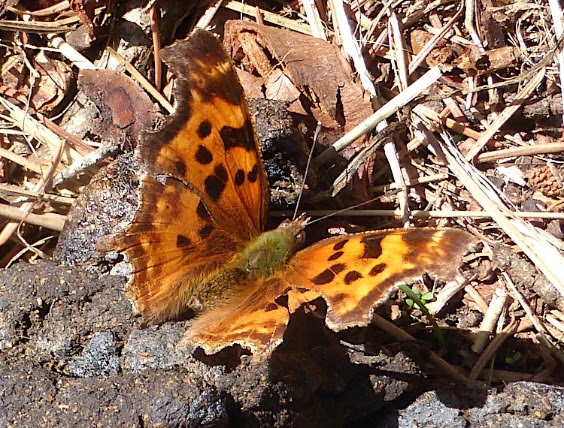There are eight butterflies that you can find with regularity in western Montana this time of year: the Mourning Cloak, three different species of tortoiseshells, and four different species of commas (also called anglewings). Glenn, our Development Director, managed to photograph six of these beauties in a single day!
These hardy butterflies overwinter in the adult stage with the help from special “antifreeze” chemicals in their body. A cozy hibernaculum, which could be a hollow tree cavity, a crack in bark, or deep leaf litter, protects them from the elements. After literally chilling out for three months, they may be seen flying as early as mid-February on sunny, 50-degree days. In April, they are actively looking for food and mates. With little to no flowers around, they dine on oozing sap, as well as scat and mud for minerals and salt. All told, they can live nine to ten months.
The next generation will be on the wing by mid-summer. They take a summer siesta (the equivalent of summer hibernation) and resume activity in late summer/fall before overwintering.
All photos by: Glenn Marangelo on 4/4/21 in Missoula, MT
Mourning Cloak (Nymphalis antiopa)
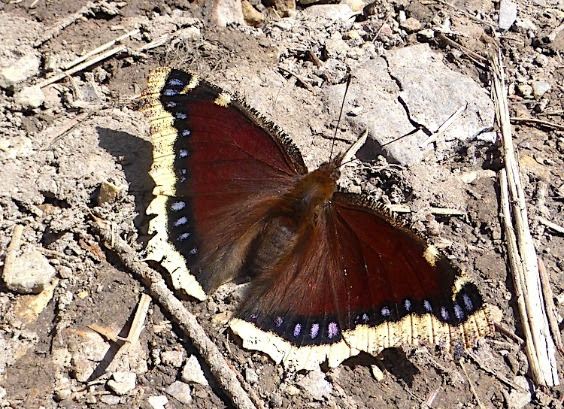
Mourning Cloaks are extra special – they’re Montana’s state insect! They’re also relatively easy to identify in flight on account of their larger size, gold-yellow border, brilliant blue dots, and brownish-maroon interior. They are found all around the U.S. (north into Canada, south to central Mexico; also, in temperate Eurasia), usually in riparian areas. Caterpillars mainly feed on willows.
California Tortoiseshell (Nymphalis californica)
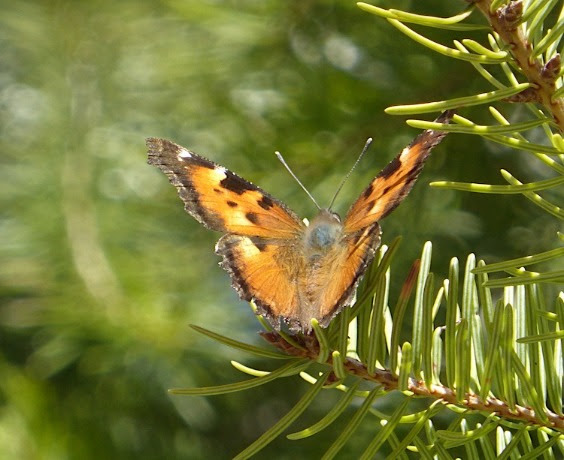
California, Compton, and Milbert’s Tortoishells can be found in our area and are generally smaller than the Mourning Cloak. The California’s brightly colored dorsal (upper) side of the wings is opposite to their ventral (under) side, which looks more like a dead leaf. The ventral side can look similar to a Comma’s but they lack the white “comma” on the hindwing or the sharp “ins and outs” along the wing edges. Caterpillars feed on various species of wild lilac (Ceanothus). Calfornia tortoiseshells stick mainly to the west, but sometimes stray to the midwest and east after population irruptions.
Here in western Montana we can see four commas (or anglewings): the Green, Hoary, Oreas, and Satyr. These commas look very, very similar. It can be a little challenging to figure out what species you’re looking at. It helps to have an ID book handy to pick out the differences. For example, when comparing the Green and Hoary Comma, the Green has individual white spots, whereas the Hoary’s are not well-defined. It also has sort of a chevron shape and is not quite as black.
When a comma folds up its wings, it pretty much disappears, the underside looks just like bark. You can also see where their name comes from, a small, white comma-like mark on each of the hind wings. Can you find the comma on this Green Comma’s wings? They’re also called anglewings because of their sharply angled wing margins.
Green Comma (Polygonia faunus)
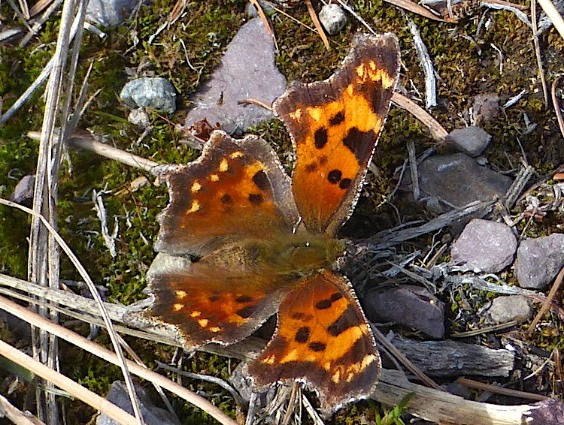
Hoary Comma (Polygonia gracilis)
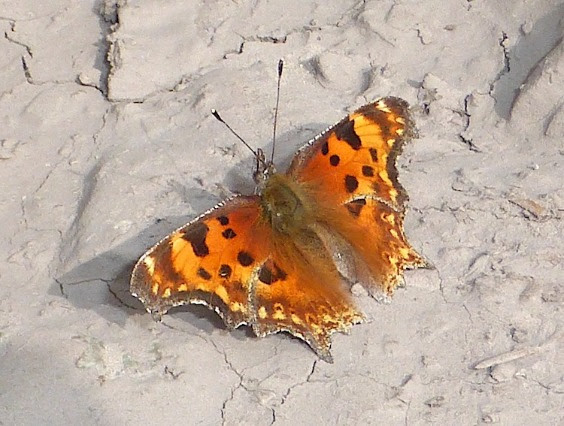
Oreas Comma (Polygonia oreas)
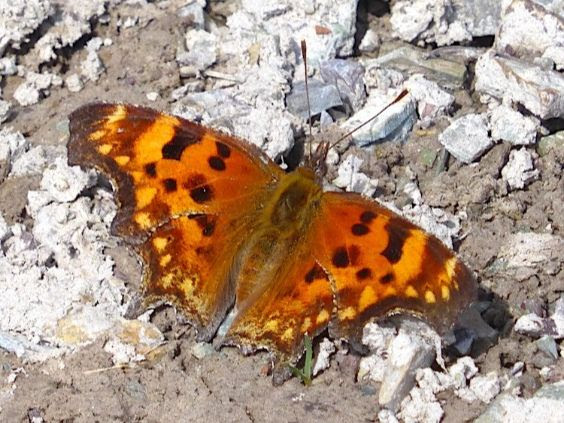
Satyr Comma (Polygonia satyrus)
